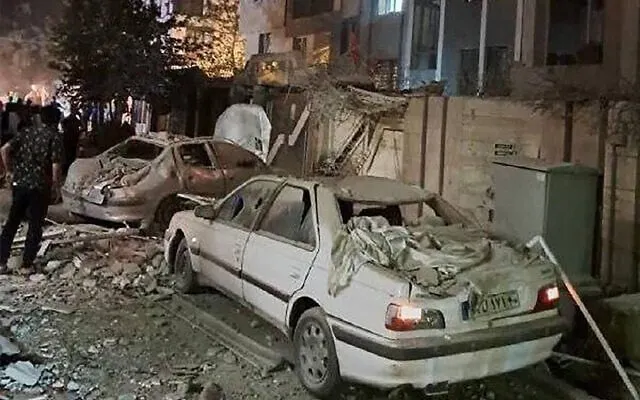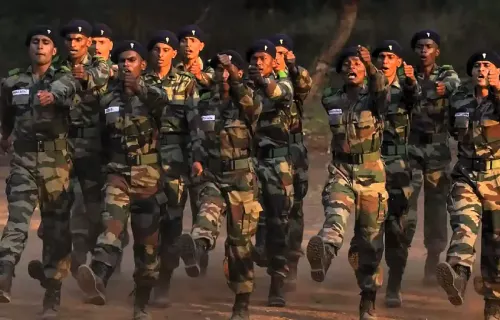Introduction
The Middle East witnessed a dramatic escalation in tensions as Israel launched two military strikes on Iran within 24 hours, prompting Iran to retaliate with a massive missile barrage. This exchange marks one of the most direct confrontations between the two adversaries in recent years, raising fears of a broader regional war.
This blog provides a detailed, fact-based account of the events, including timelines, military strategies, global reactions, and potential consequences.
Timeline of Events: Israel’s Strikes & Iran’s Retaliation
First Israeli Strike (April 18, 2025)
- Location: Isfahan, Iran (Near a key nuclear facility)
- Time: Approx. 3:00 AM local time
- Weapons Used: Suspected small drones or missiles
- Target: Suspected air defense systems & drone storage sites
- Casualties: Minimal; no major infrastructure damage reported.
Second Israeli Strike (Less Than 24 Hours Later – April 19, 2025)
- Location: Tabriz, Northwestern Iran
- Time: Approx. 1:30 AM local time
- Weapons Used: Precision-guided missiles
- Target: Suspected missile production facilities
- Iranian Response: Air defenses activated; minor damage reported.
Iran’s Retaliation: Missile Barrage (April 19, 2025)
- Time: Approx. 5:00 AM local time
- Missiles Fired: Over 50 ballistic & cruise missiles
- Targets:
- Israeli military bases in Golan Heights
- Suspected Mossad-linked sites in Northern Iraq
- Interceptions: Israel’s Iron Dome & Arrow Defense Systems intercepted most missiles.
- Casualties: Limited damage; no major fatalities reported.
Why Did Israel Strike Iran?
Israel’s attacks appear to be a response to multiple provocations:
- April 5, 2025: Iran-backed Hezbollah fired rockets into Northern Israel.
- April 12, 2025: Suspected Iranian drone attack on an Israeli cargo ship in the Red Sea.
- Nuclear Concerns: Israel has long warned against Iran’s uranium enrichment activities near Isfahan & Natanz.
Was This a Direct War Declaration?
- No formal war declaration, but a clear escalation.
- Both sides avoided major civilian targets, suggesting controlled retaliation.
Iran’s Military Strategy & Response
Iran’s missile barrage was likely intended to:
- Deter further Israeli strikes
- Showcase military strength without triggering full-scale war
- Signal to proxies (Hezbollah, Houthis) to stay on alert
Were U.S. Bases Targeted?
- No direct strikes on U.S. forces, but Iran-backed militias in Iraq launched minor attacks.
- The U.S. has warned Iran against escalation.
Global Reactions & Diplomatic Fallout
United States
- Urged de-escalation but reaffirmed support for Israel.
- Deployed additional warships to the Red Sea.
Russia & China
- Called for restraint but blamed Israel for “provoking” Iran.
- Russia warned of “dangerous consequences” if strikes continue.
Arab States (Saudi Arabia, UAE)
- Quietly urged mediation to avoid regional spillover.
- No public condemnation of Israel, signaling shifting alliances.
United Nations
- Emergency Security Council meeting called.
- UN Chief warned of “catastrophic” regional war risks.
Military Analysis: Who Has the Upper Hand?
Israel’s Advantages
- Superior air defense (Iron Dome, Arrow, David’s Sling)
- Advanced intelligence (Mossad, cyber capabilities)
- U.S. military backing
Iran’s Strengths
- Largest missile arsenal in the Middle East
- Proxy networks (Hezbollah, Houthis, Iraqi militias)
- Strategic depth (difficult to fully neutralize)
Could This Lead to Full-Scale War?
- Unlikely for now, as both sides prefer controlled strikes.
- Risk of miscalculation remains high.
What Happens Next? Possible Scenarios
1. Temporary De-escalation (Most Likely)
- Both sides may pause attacks after “proving their point.”
- Backchannel talks via Oman/Qatar could resume.
2. Continued Shadow War
- Covert strikes, cyberattacks, & proxy conflicts intensify.
- No direct large-scale war but persistent instability.
3. Full-Blown Regional War (Worst-Case Scenario)
- Hezbollah joins with 100,000+ rockets.
- U.S. & Iran drawn into direct conflict.
- Oil prices skyrocket, global economy destabilized.
Conclusion: A Dangerous New Phase in Israel-Iran Conflict
The back-to-back Israeli strikes and Iran’s missile response mark a new level of direct confrontation. While neither side appears to seek all-out war, the risk of unintended escalation remains severe.
The world watches anxiously as diplomatic efforts struggle to keep tensions from boiling over. For now, the Middle East stands on a knife’s edge.
Key Takeaways
✔ Israel struck Iran twice in 24 hours (Isfahan & Tabriz).
✔ Iran retaliated with 50+ missiles (Golan Heights, Iraq).
✔ No major casualties, but risk of further escalation remains.
✔ Global powers urge restraint; U.S. reinforces regional presence.
✔ Three possible scenarios: De-escalation, shadow war, or full conflict.
For Live Updates:
- Al Jazeera: https://www.aljazeera.com
- BBC Middle East: https://www.bbc.com/news/world/middle_east
- Reuters Conflict Tracker: https://www.reuters.com/world/middle-east
Sourashis Chanda brings readers their unique perspective on Business, Economy, Health and Fitness. With a background in Health and Physical Fitness of 2years, I am dedicated to exploring [what they aim to achieve with their writing, on the sustainable Economy of the country, various pro tips about business, latest goverment news, with some tips in health are and Fitness.







